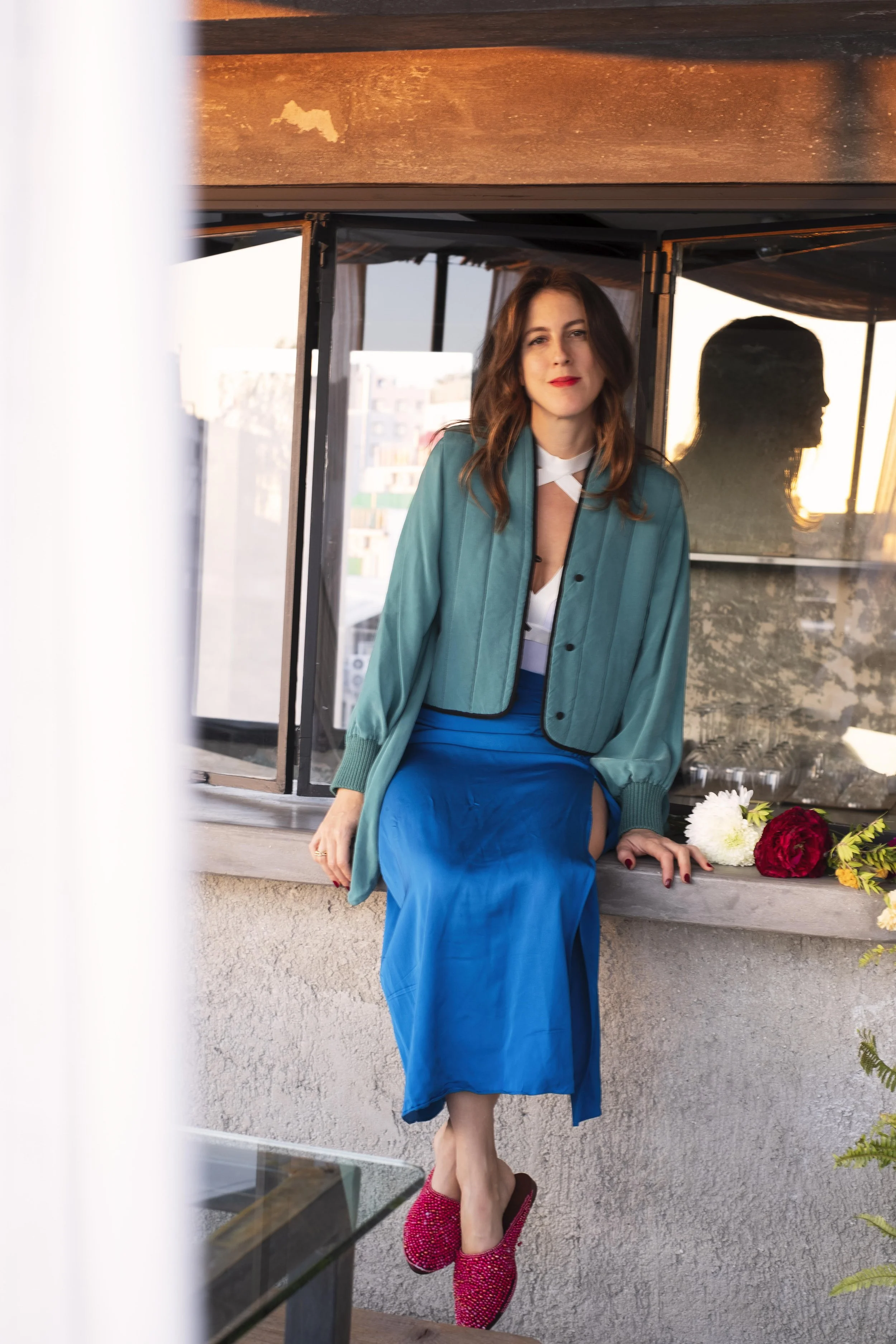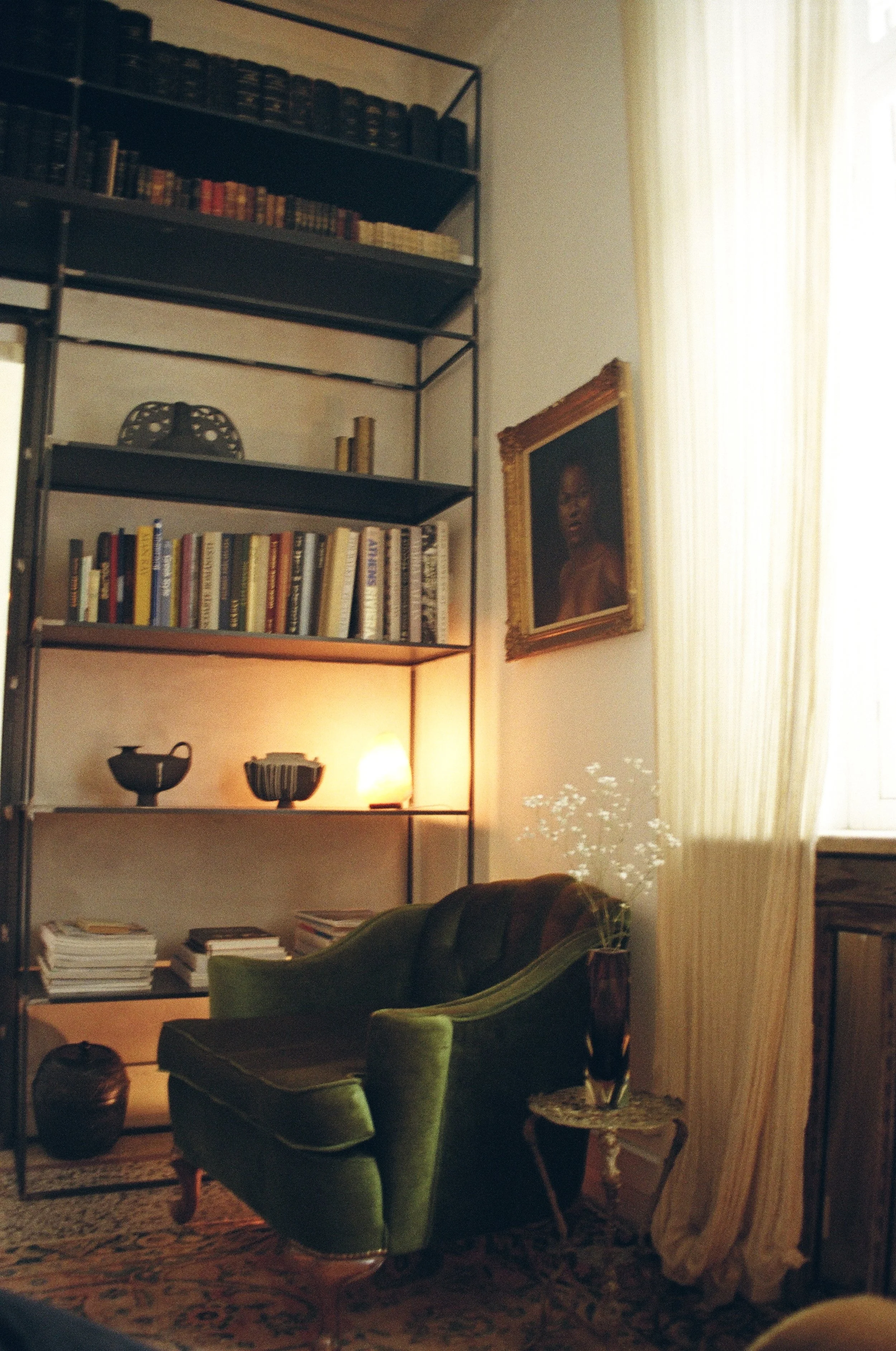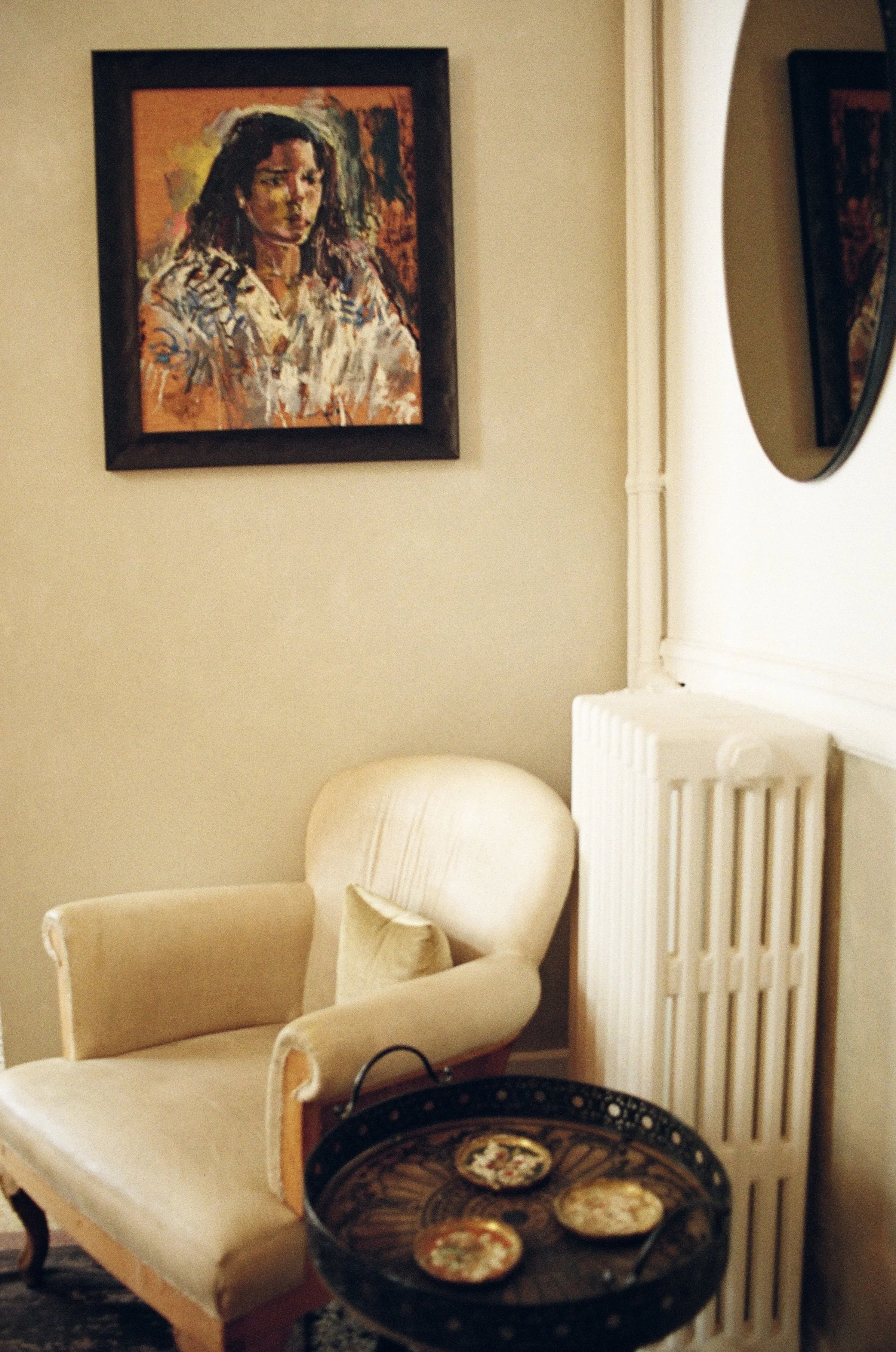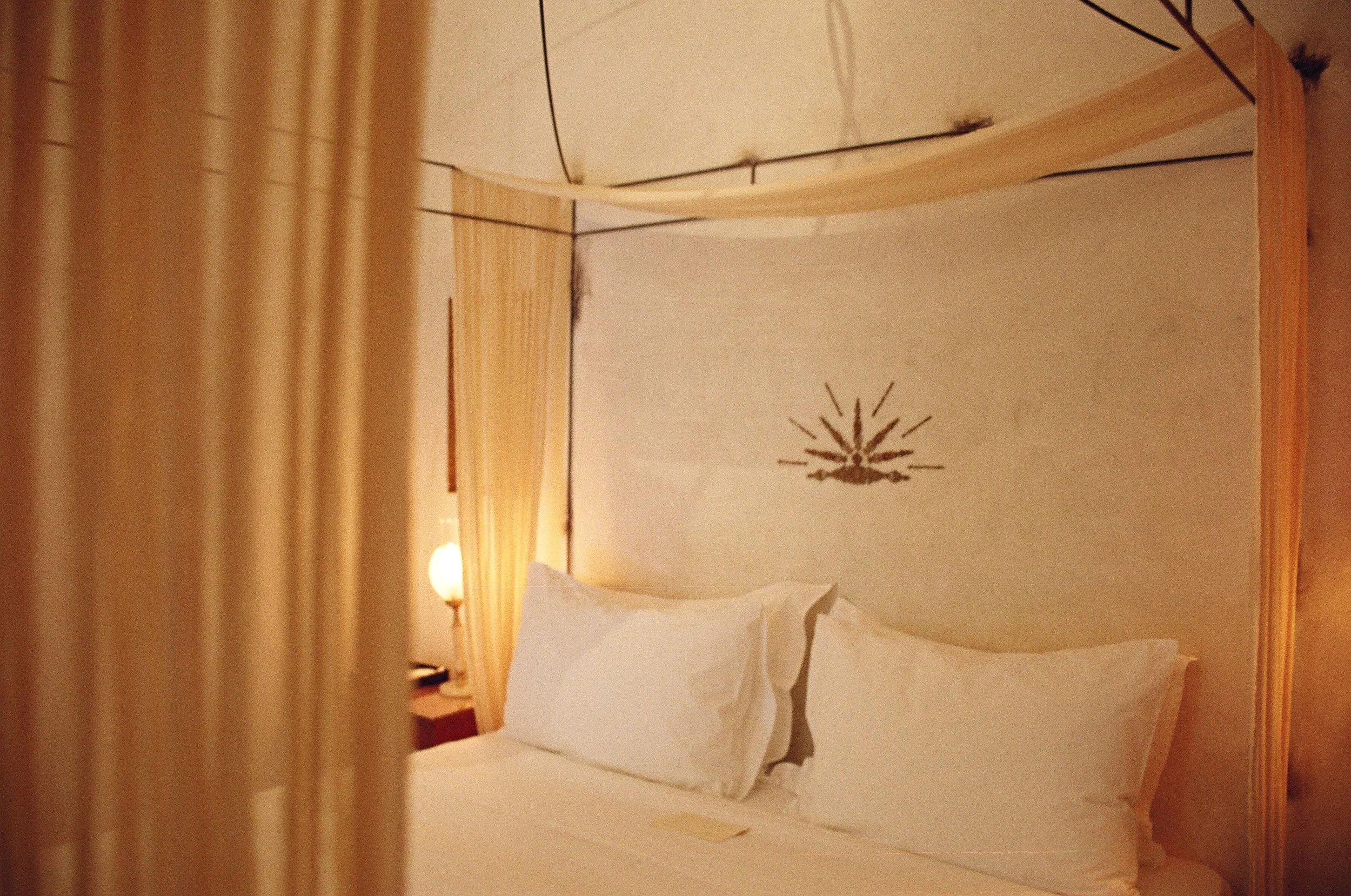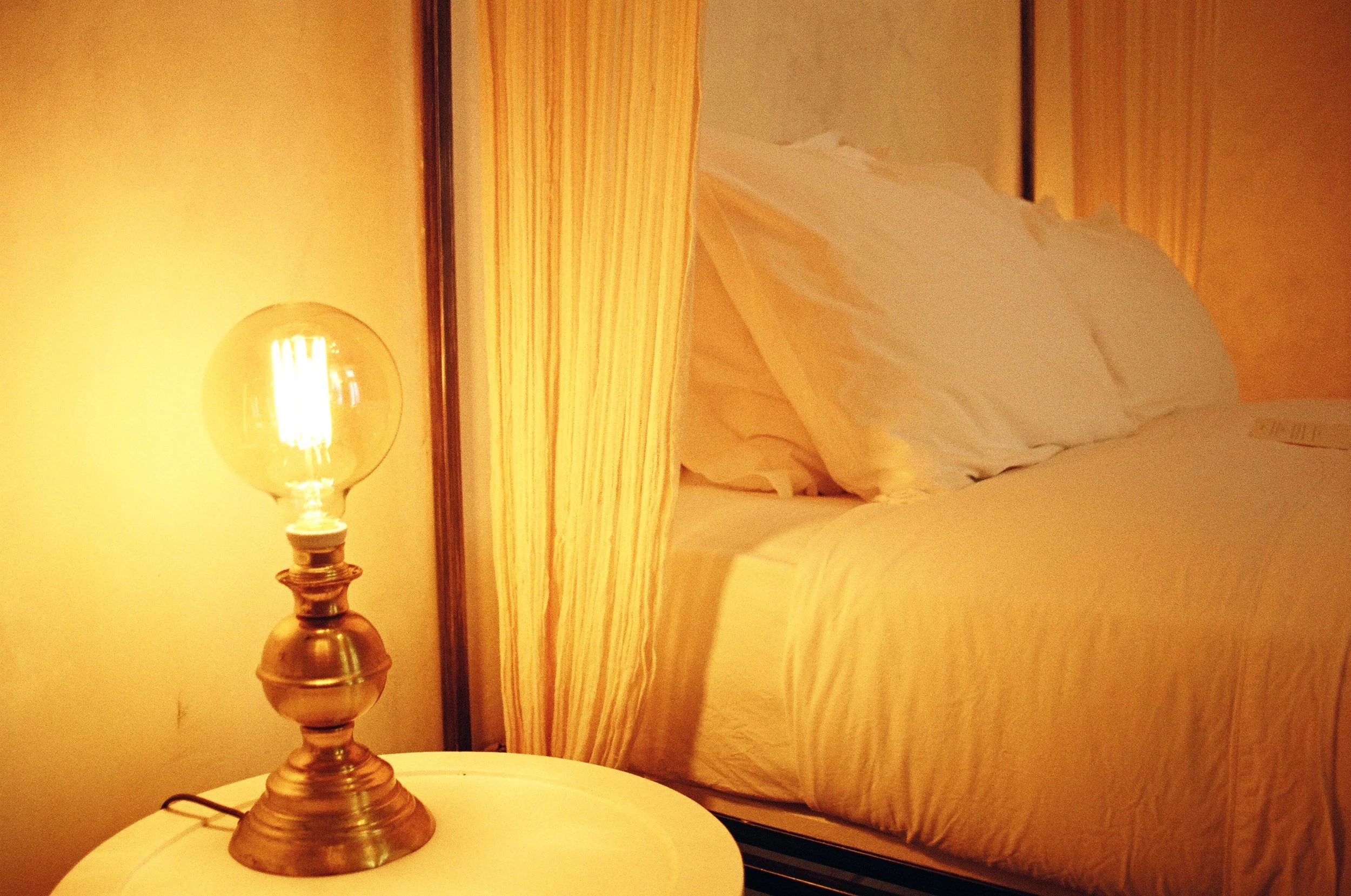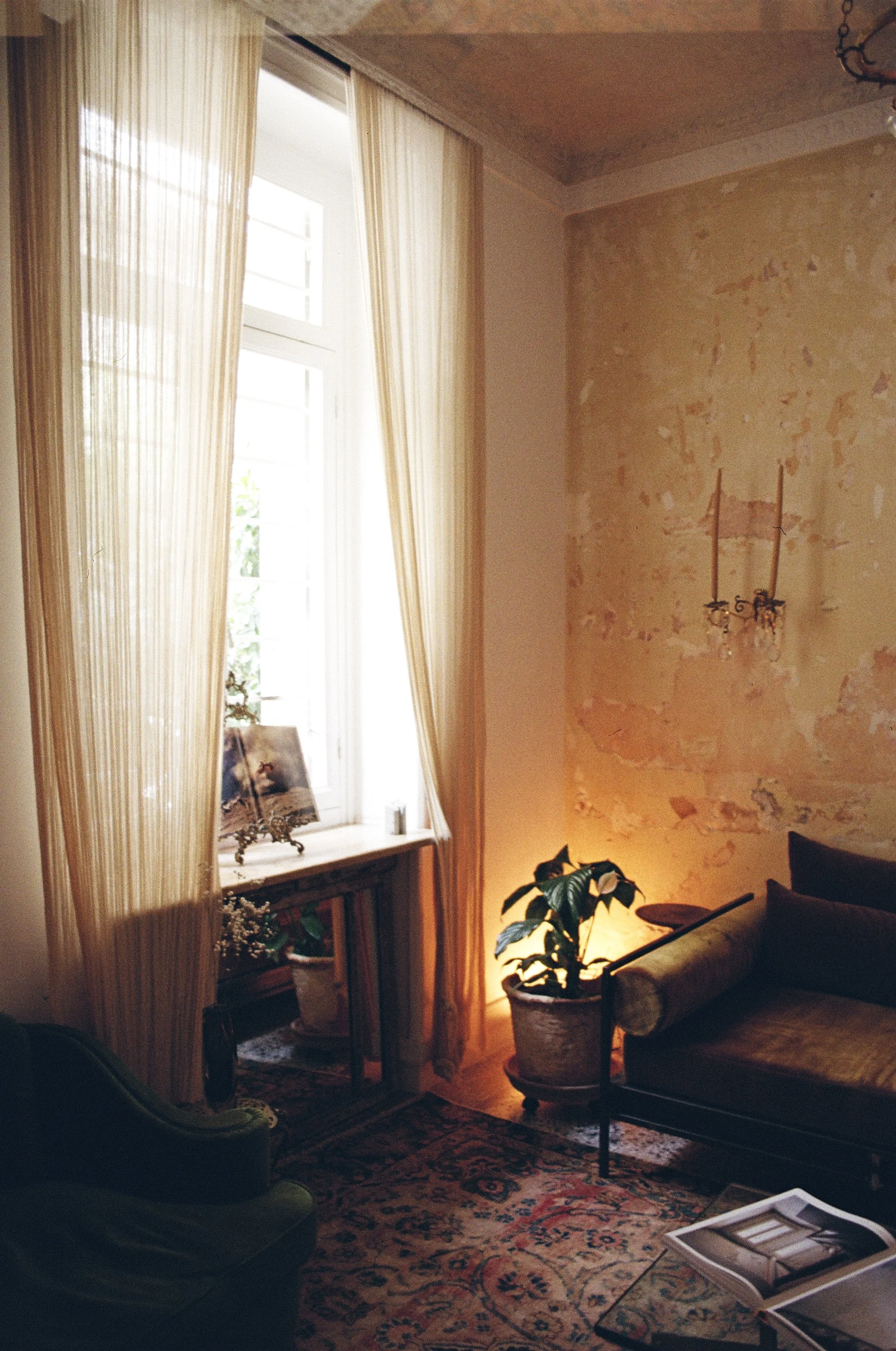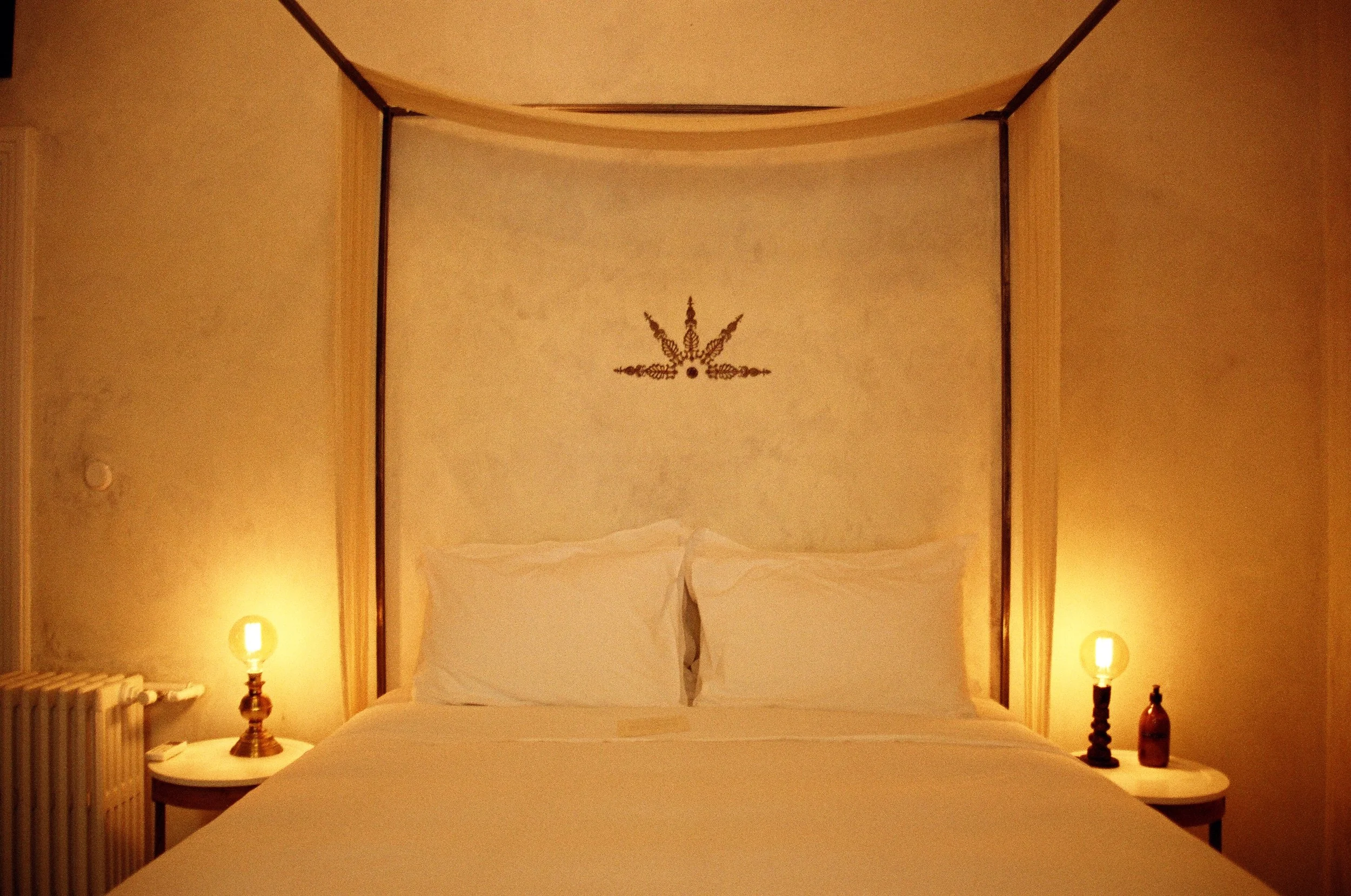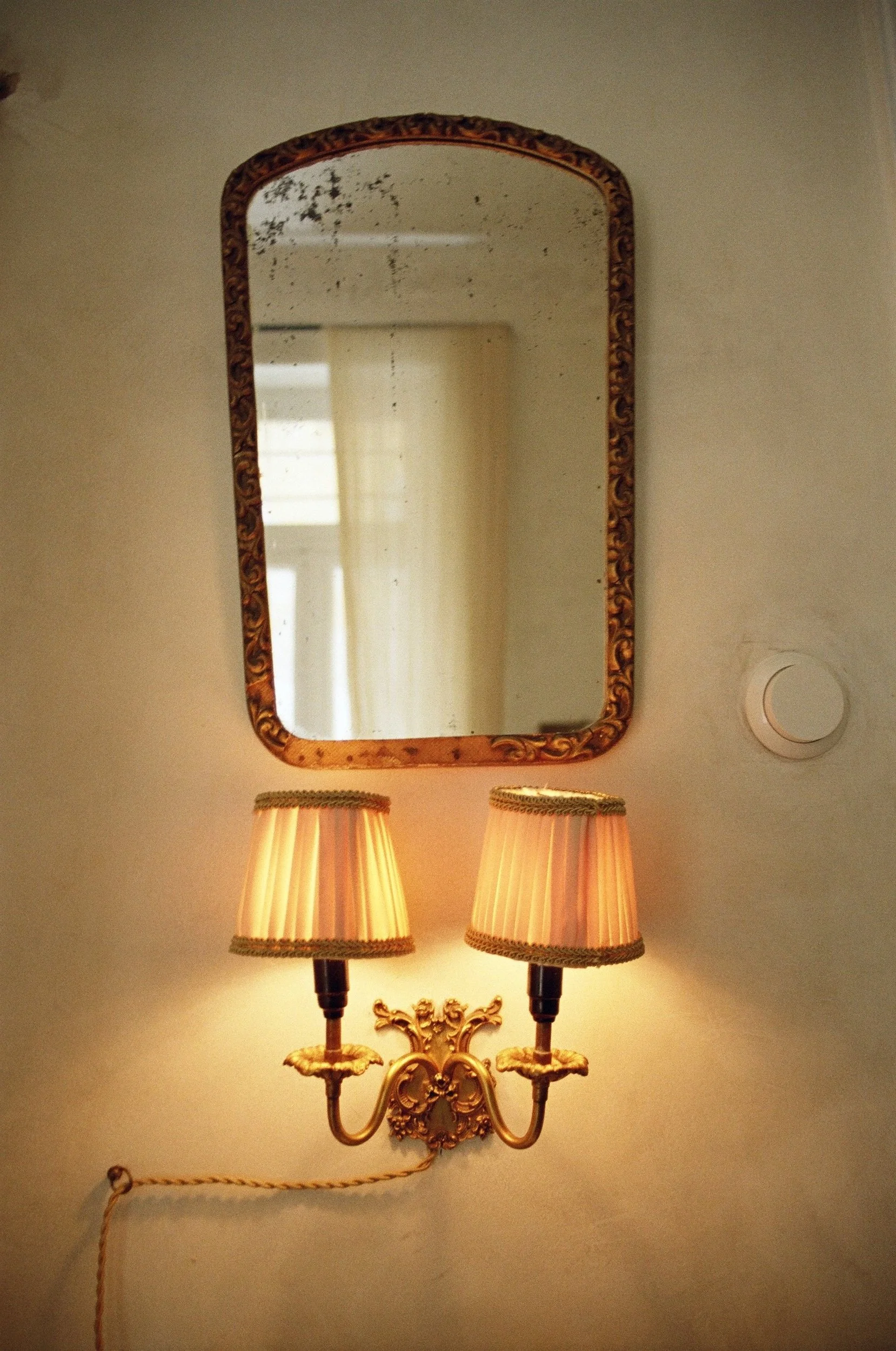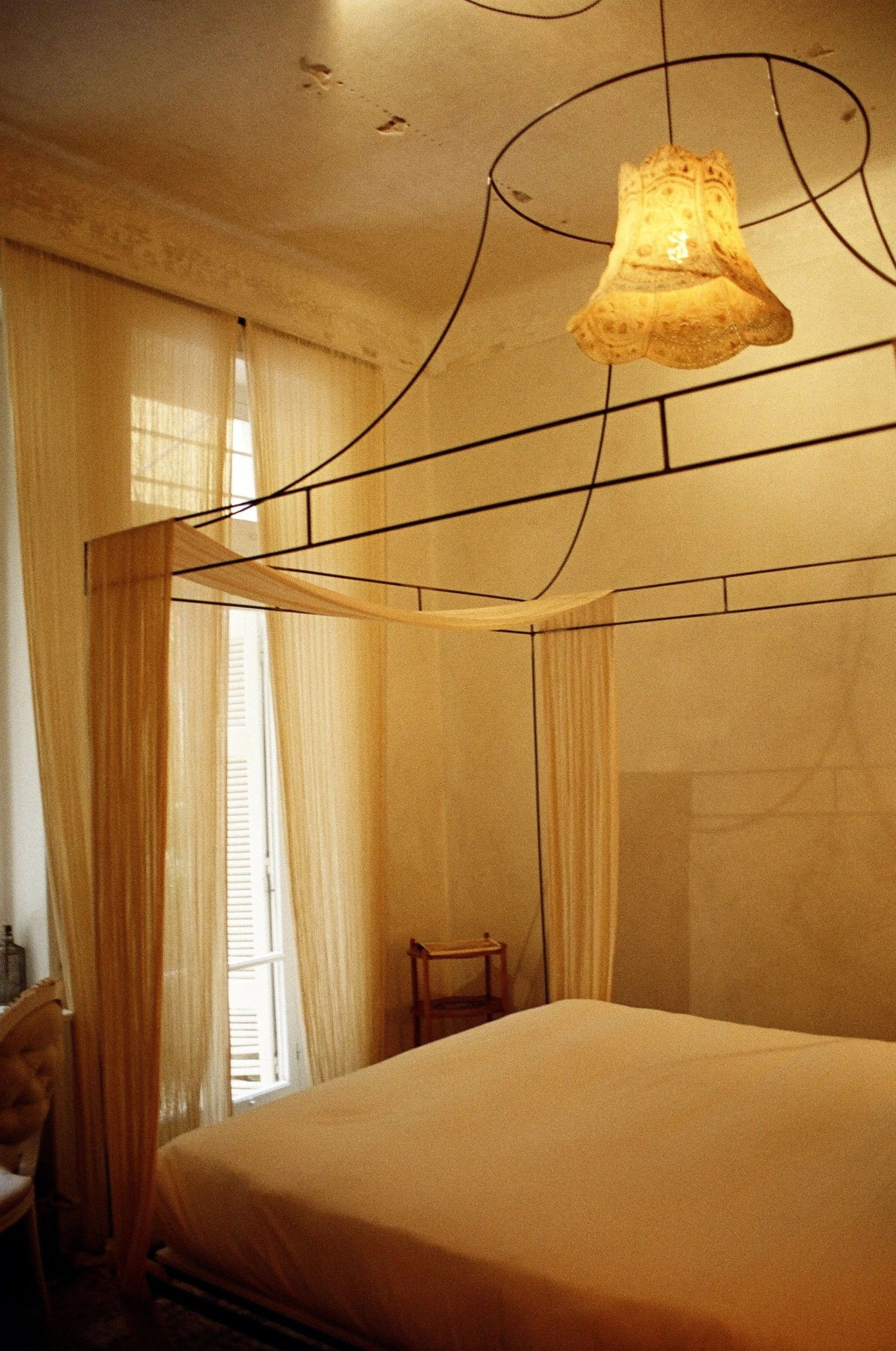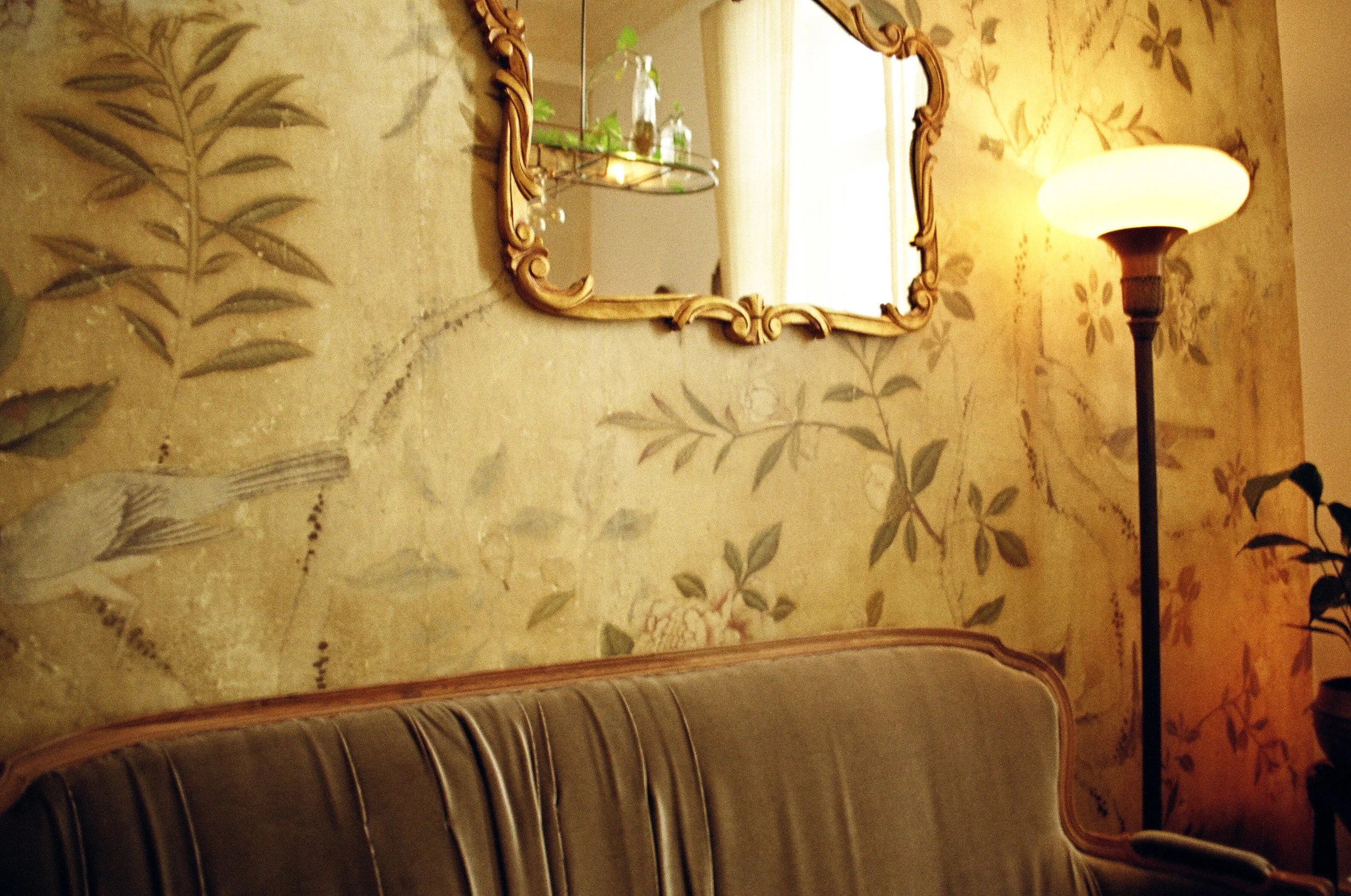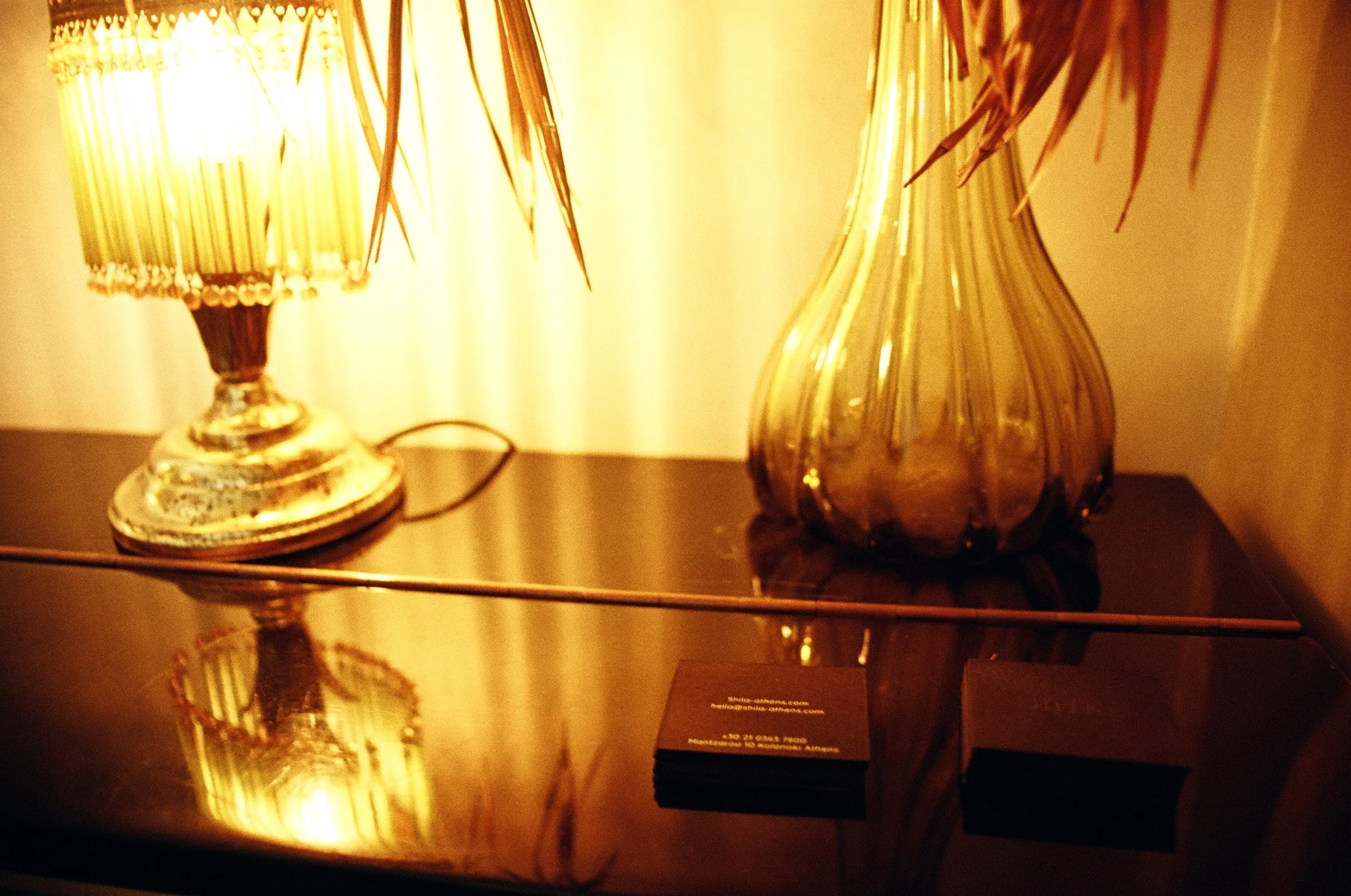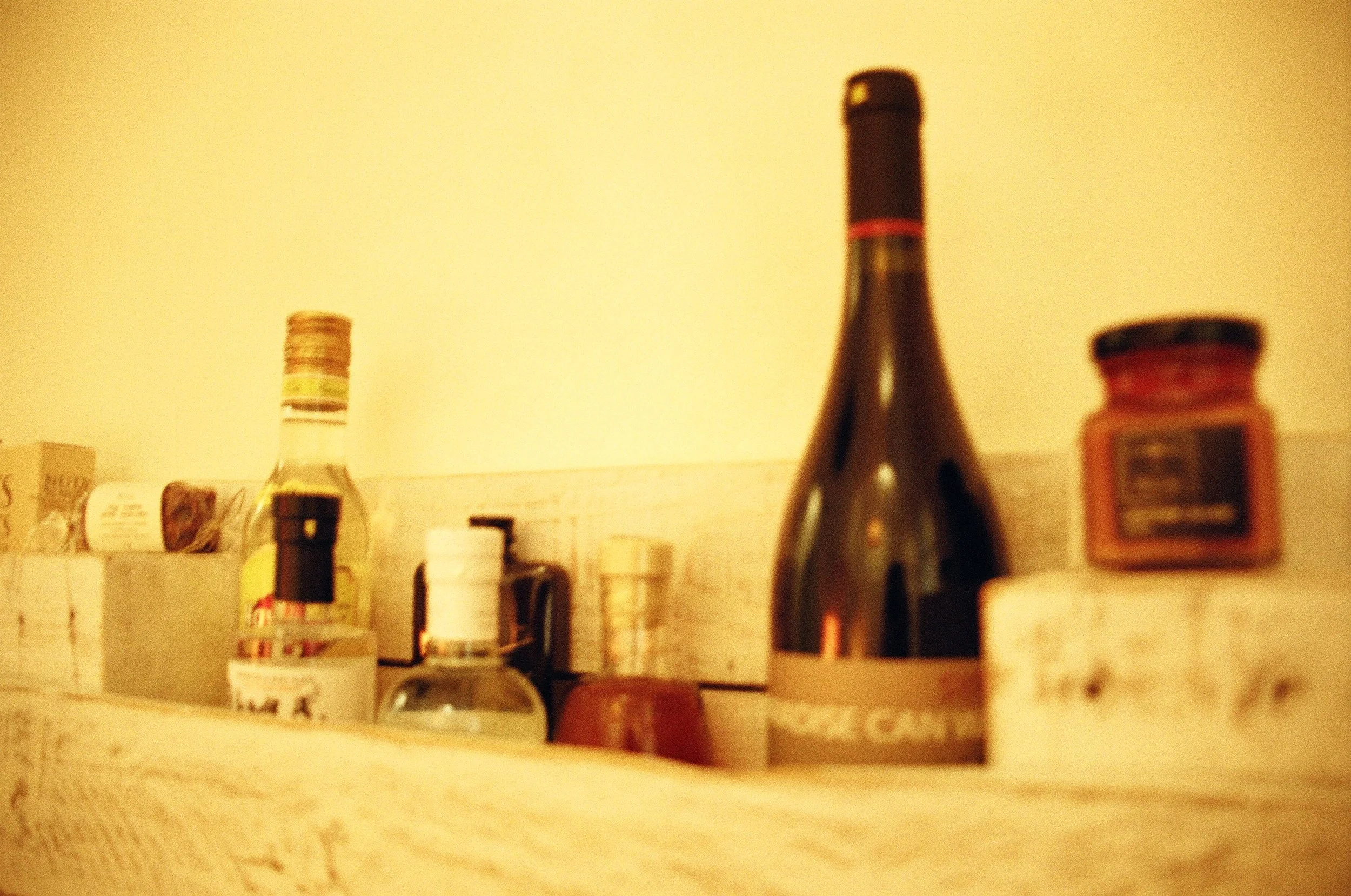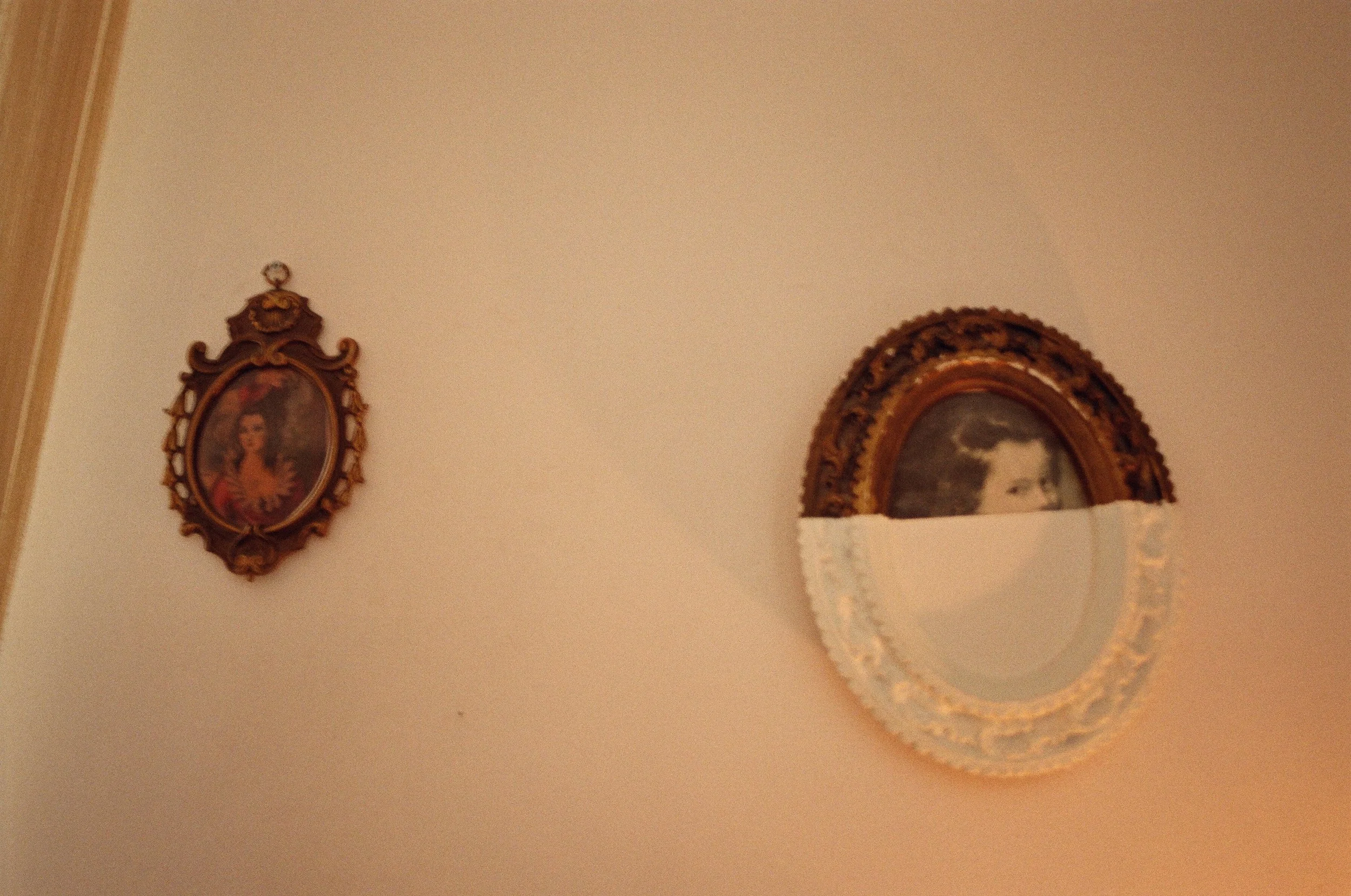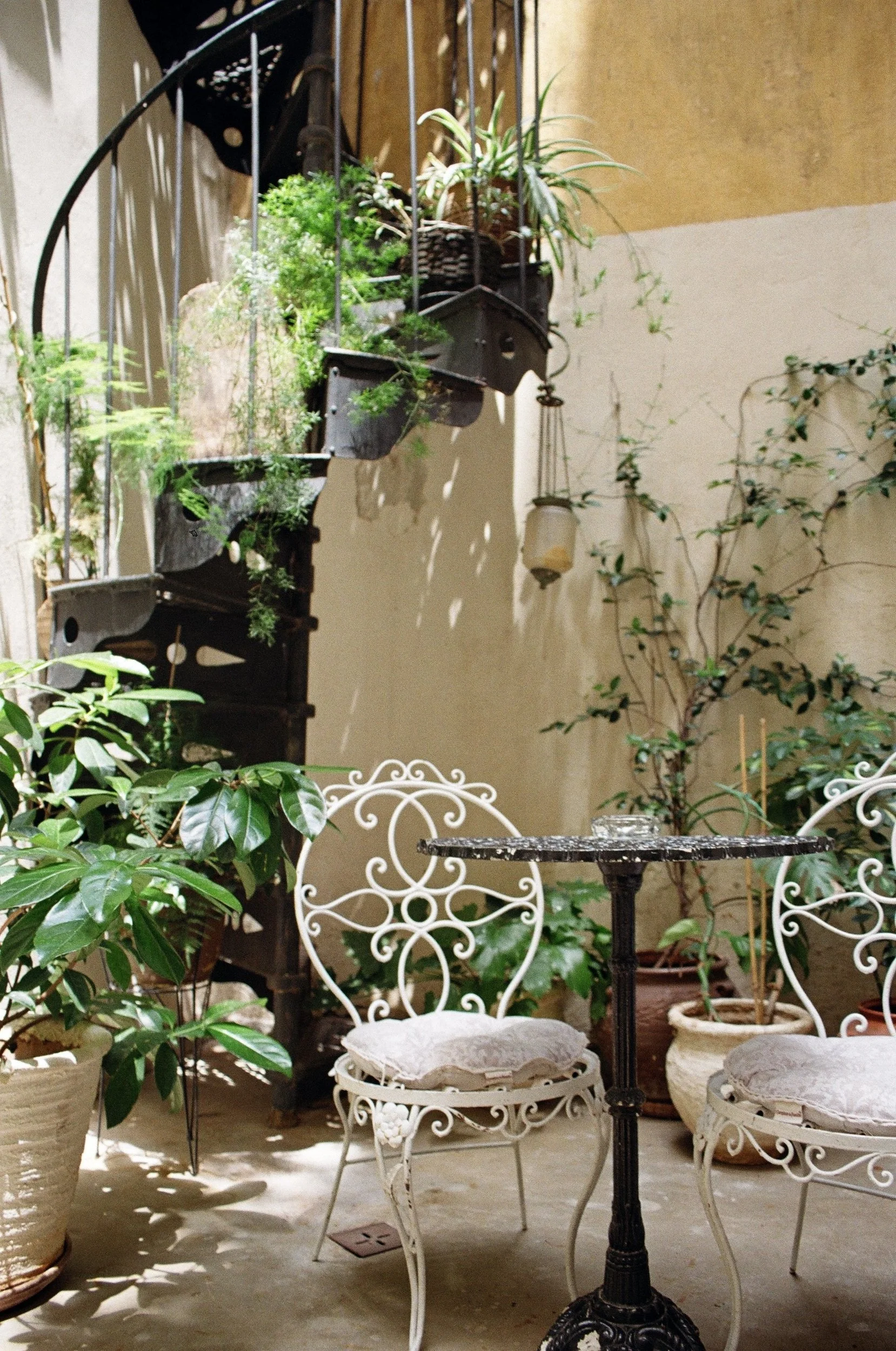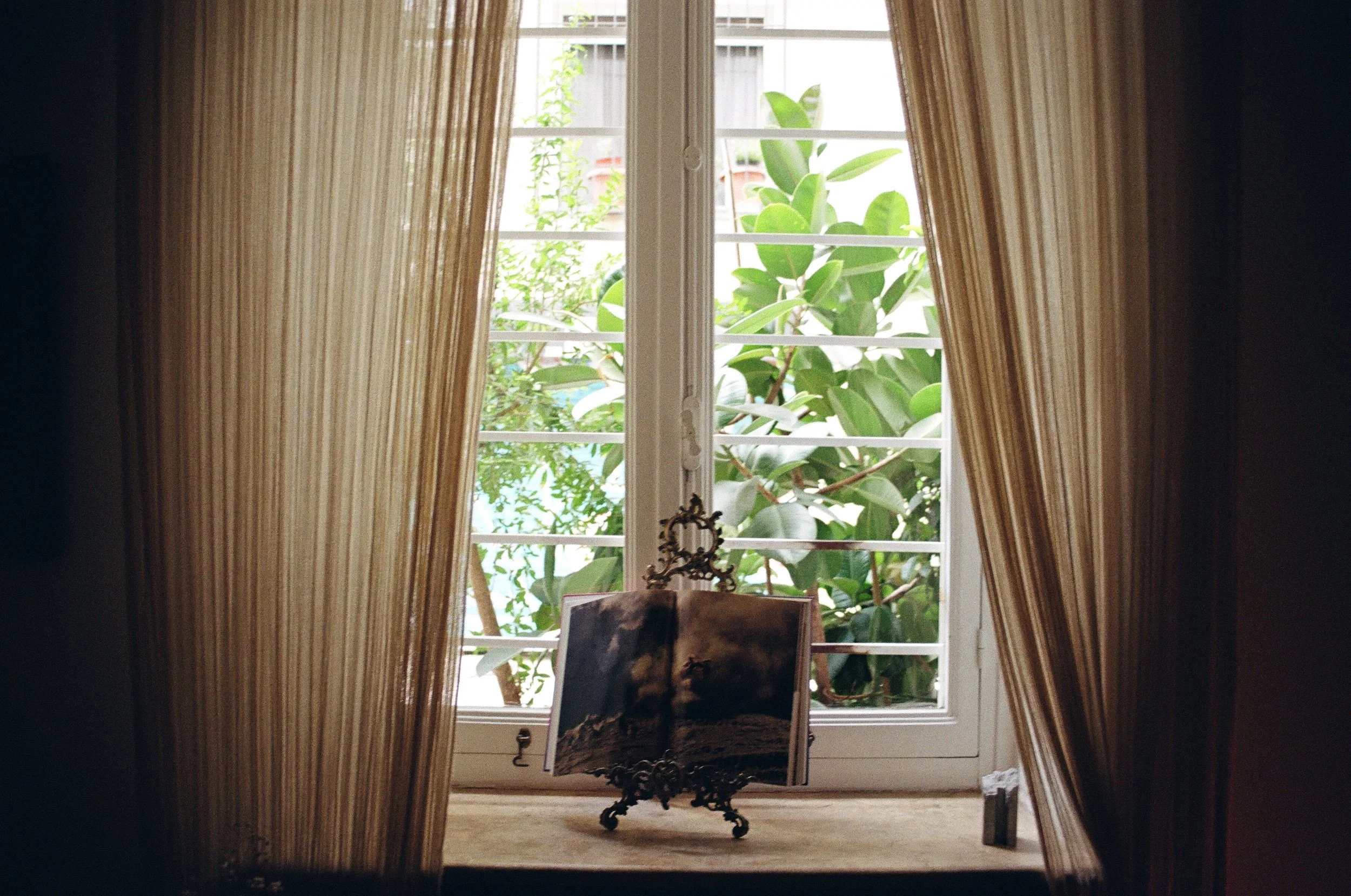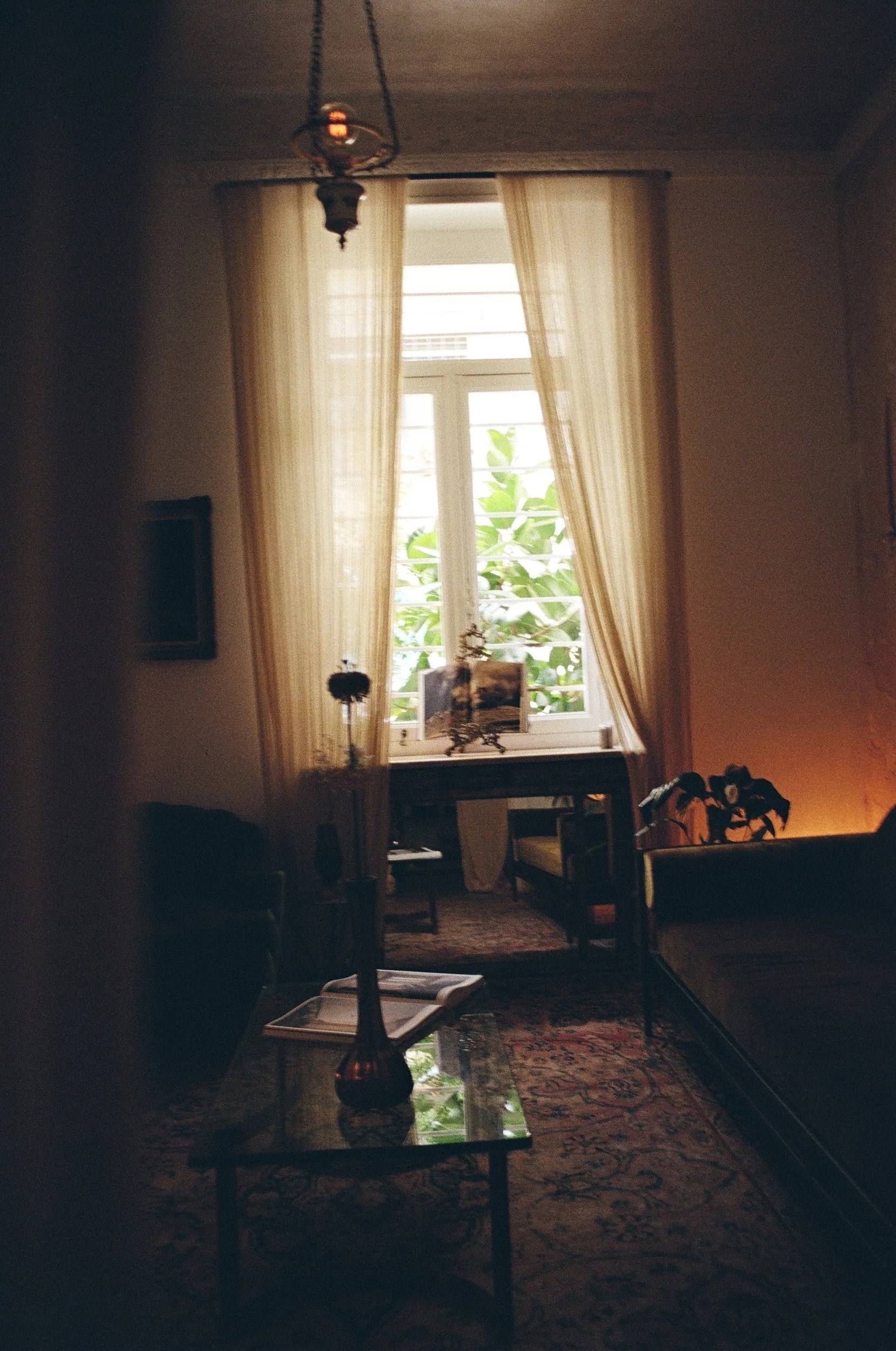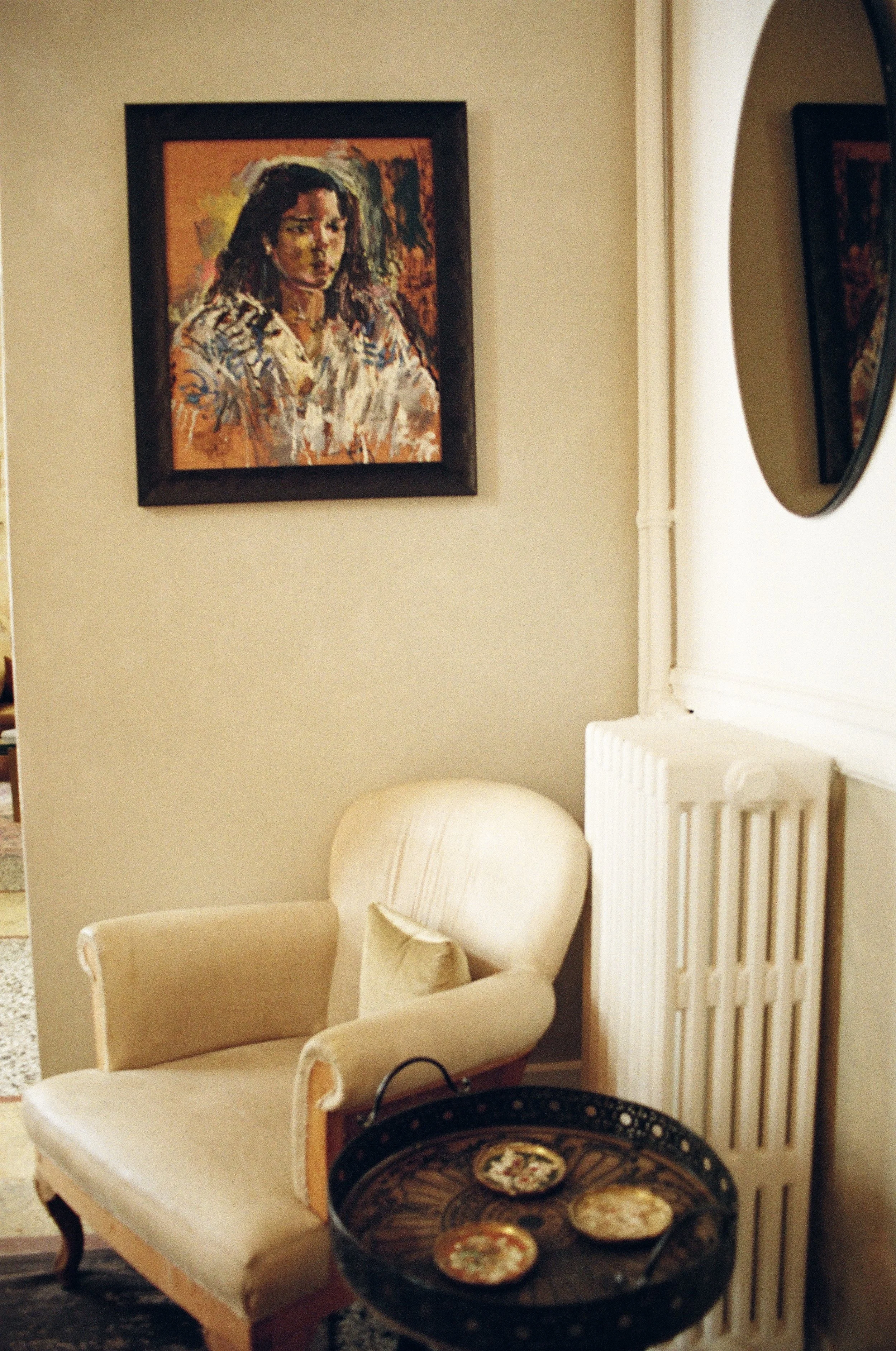in conversation with . . .
Eftihia Stefanidi
Photo courtesy House of Shila
Eftihia Stefanidi is the creative director of Shila Athens and Mona, two boutique hotels in the heart of Athens. Like a concept store, the projects are outfitted with a rotating curation of art, design objects, and artisanal goods that are all available for purchase during a visit.
To connect the creative community, Eftihia organized a social-club program, House of Shila, which hosts special events and cocktail hours for members working in creative industries that are living in and visiting Athens.
Keep in touch with Eftihia:
Instagram
@eftihia, @shila_athens, @mona_athens
Website
www.shila-athens.com
Words by: Tina Iasonidis
Photos by: Tina Iasonidis, unless otherwise noted
Interview recorded: September 7, 2022
In your own words, who are you, and what do you do?
I identify as a visual storyteller that uses different mediums of expression, primarily photography, video and curation. This is the core, which expands into art direction and concepts around buildings. There is the brand world too, where I engage in creative direction and marketing.
What I do certainly intersects with my life and the interior world.
How did you launch this career? Did your studies lead you here?
It has been like a chain. Everything had to do with whatever came next.
I studied theater and film. That led me into film festivals. I worked for a while for several film festivals as a short-film programmer and reporter to the big festivals. That also led into my time with Secret Cinema, which was a very important time for my career. It was a very underground event that was happening in London at the time. It was an experience that was immersive.
Secret Cinema had to do with taking over a building that might be abandoned or unused for years, and we would recreate a world of a film, equipped with actors and set design. This kind of experience in transformations and space started there. I was in the creative team, selecting the images and doing a lot of the creative communication, which, at the time, I didn’t know was marketing. I realized that it’s a sort of organic, inspiring, kind of marketing to create an experience and an ambiance.
That led me to location scouting. I was involved with trying to find the right location for a show in New York. I saw a lot of buildings, a lot of architecture.
If the question is how was this career launched, it was by complete coincidence. There’s a lot of chance, but there’s a lot of background.
How would you describe your style and taste in architecture, interiors, and art? Seeing the photos of Shila and Mona, it feels like you have a distinct point of view and a wide range of tastes, but you’re able to tailor both these projects to feel distinct.
I have a lot of inspiration. For the social-media channels, I display things that I like but that also correspond to the tones and the feeling of the space.
With Mona, it’s something more raw, industrial, more grand, and outgoing. With Shila, it’s more of a romantic, own-little-world place where you would maybe want to write a novel.
I like a lot of eras of architecture. With the projects that we are doing, there is this marriage of old and new. It’s that balance and that marriage of those eras that is interesting to us.
Where did you get your love for design?
Starting as a child, I think my parents had good taste. Most of my memories are from our summer house in Greece. It was actually made while I was growing up, and I could see it becoming. It was very much about nature and light and raw materials. It’s a very simple house, but I think I have a lot in me from growing up there.
I think traveling for sure has opened up my mind and my eyes. I’ve been very lucky to be in beautiful houses by friends of friends and observing what they’ve created. That gives me a lot of inspiration. Being in people’s places and noticing the feeling inside them—how they’ve arranged their things, how their library looks, what they’ve chosen. All those details create a soul in a space apart from architectural form.
Of course scrolling through the internet gives you a lot of information very fast. You can be binging on Tumblr or Pinterest, and I enjoy doing that as well, but nothing compares to actually being there in the spaces.
What’s the story of Shila? How did you bring it to life?
It was a coincidence how everything started. I met with Shai Antebi, an entrepreneur from New York, who was ready to realize this project, and chose Athens just feeling that it’s the right moment.
Mona was the first building that we saw. We envisioned this twenty-room boutique hotel that it is now. Shila came by chance—we stumbled across this building while we were planning Mona, and it was just too good to let go.
Shila was a 1920s neoclassical building in a very cute neighborhood, in a very cute alley. We immediately saw what it could become once we got in. It has this feeling of being invited in to someone’s place. I think that’s what we saw: the kind of warmth and intimacy that could be created there.
We started working on it very organically, without having major, firm lines of architecture or design. Then we had the idea of having an art collection. As we were making a lot of our own furniture, we realized, “This is like a design studio.” Each component came about while trying to solve design issues. It made sense that these became part of our House of Shila brand and that we engage in these fields. Shila really encompasses all of our interests and passions in one place.
What were the major challenges of building this mix of old and new in Athens, a historic, ancient city with an appetite for the modern and contemporary?
I think the main challenge is making this balance. There is a limit you can go in one direction or the other to really get it right, so it doesn’t become or too modern or you’re trying too hard. The challenges are always good, because when you cannot find things that you need, you make them, so for us it was actually a blessing.
We became very creative with found materials in the building. We worked with bricks that we found, with marble that we found, and then it became even more exciting for us of what we can design. I think the old is already the structure of the building, the mosaics, the staircase—all those things are already there. They’re beautiful and they communicate the era and the history. Then it was about bringing in the modern touches and individual objects that all together create this feeling of someone’s home.
“Ethereal, historic, and cozy” come to mind when I think of Shila. How would you describe your projects? Who are the characters you envision living in them?
Shila is an old soul, a very romantic soul, and a dreamer. The moment you step in, you’re stepping into a dream. You’re traveling in time, not to a specific era, but you’re going to some space where your imagination opens, and you’re the protagonist in a narrative that you can make. It’s very charming and seductive.
Mona is more of a youthful spirit, more wild, more raw. That definitely comes from the location because it’s very close to Monastiraki Square, and it’s a very vibrant, multicultural neighborhood. You can feel that it’s alive—you can feel the night, you can feel the day. It’s more exposed and more outgoing.
Since you’ve been working through multiple mediums and disciplines, how did these inform how you created the distinct personalities of each project?
I started feeling, after making these projects with our team, that it’s very close to making a theater piece. Essentially hotels are scenes; you’re setting the scenography. And then you have actors, which are the people working in the hotel. And then you have a narrative, which you’ve designed so people can have an experience as they go through it.
With, of course, a lot of improvisation, because if everything’s prescribed, it’s not very natural, and I don’t think anybody enjoys a formula.
How I saw my part in these projects was imagining a live theatrical act and asking, “What can you experience while you’re in the hotel that can surprise to you? Why would you place an object there? What does that mean in terms of someone finding it and going through that process?”
Living room style lobby
What’s clear is they’re more than boutique hotels. They fuse art and hospitality in an interesting way that engages both the larger community and those staying there. How does the hotel, the members-club portion, and the art that’s exhibited relate to the design community in Athens?
It’s a good point that Mona and Shila are not just hotels. Sometimes it feels like the hotel part is just the excuse to do all the rest. [Laughs]
From the beginning, we were very interested in working with local Greek designers. We have close relationships with the artists that have joined our art collection, especially in the field of ceramics. We occasionally commission pieces, and these collaborations have been truly enjoyable. We get to sit with the creators in the making process.
The House of Shila collection is a body that is growing and evolving with the spaces. The aim is that visitors and guests will feel inspired and discover new perspectives. We want the artists to use the spaces as a stage of their own, as their showroom. They can host pop-up shows, they can bring their clients. That's the part we are excited about the most: collaborating with talented individuals across all fields and making use of our spaces.
How would you describe the Athens design community or scene today? What’s been the change in the last five to ten years, as there’s increased attention on the city as a rising home for modern and contemporary art in Europe, with events like Documenta and the proliferation of ideas through Instagram and the internet?
Documenta 14 was the milestone that put Athens on the map. It is such an important art fair and it brought people to spend time here and get to see the city from another angle.
For most travelers, coming to Athens was a quick stop at the Acropolis before catching the island ferry. This is no longer the case. There are many artists that have settled and continue to move here. It's really a great moment to have all these different minds and cultures coming to Greece and giving, too, not just consuming.
New galleries opened, which brought a new wave of art. Design has become much more interesting. More and more we are realizing the importance of beautiful objects and of investing in something of value for our homes. Perhaps after the experience of being locked-in during the pandemic, it created that need for elevating the interior world. You can see how galleries are also now moving towards the design angle.
Shila opened in 2020, and you expanded and opened Mona in 2022. How did your business respond and evolve with the pandemic?
Shila was planned to open that spring. Although it was a bit of a blow to the entire hospitality industry, it was actually helpful to start slow, and open in June and take it step by step and perfect everything we’ve had in mind as a concept and not be overwhelmed.
That year was meant to be the biggest year in Greece for tourism. They were expecting a lot of people. For us, in a way, it was a blessing in disguise. It also helped us creatively to realize how much we would like to engage the Athens community, the Greek community, and not just tourism.
The angle that we always thought we will have actually took priority—events, art exhibitions, creating this hub for locals.
What are your sources of inspiration, and how you get out of a creative rut?
There’s a lot of things that I get inspired by. Film, photography, a piece of music, books . . . there’s such a vast catalog of things.
Traveling definitely tickles me in that way, and pushes me to see new things. I never underestimate, even if it’s like one day going somewhere. On return, my channels are more alert to receive.
And also design—definitely beautiful spaces, beautiful things, are very inspirational. Even just taking a walk. Usually I try to take a walk in the day to break the work just for ten or twenty minutes. These walks are very important. They feed me, then my mind is blank, and I notice things that may be inspiring to put into some projects, which can be something seen on the street or a store. I think it can be anywhere.
What is your day-to-day like in this role?
Every day is different. I think there is a mix of research, meeting with artists, streaming a lot of images in my head to create the visual language that we want to showcase, discussing our next event. Also a lot of practical stuff—observation, making notes about how things work and how things can be improved. Then seeing physically things that inspire, which is important for my work.
What’s the biggest challenge to running this type of business?
Hotels are live organisms that run 24/7. There are things that can happen at any moment. Just being alert and dealing with whatever might.
We have an amazing team, and everybody’s very passionate and treats these projects like their home, so that is really helpful.
The other challenge would be that you want everybody to feel happy once they visit your place. Sometimes you cannot make everybody happy. I wouldn’t say it’s a challenge because it has nothing to do with convincing someone about something, but it’s more about constantly receiving criticism of something you’ve created. You learn to take the good things from it, and you learn to improve. I think it’s actually a constructive challenge. But it is something that happens on a daily basis.
Inside the suites.
Tell me about the members-club programming and get-togethers you have on the roof.
Another very kind of organic evolution. I swear not to say that word any more. [Laughs]
It started in 2021, when we opened Shila and invited our friends to enjoy the space and meet each other. These gatherings were hosted every Thursday at the roof garden and became “Shila’s Social Club.” Each week, we would set up a pop-up cocktail bar and have guest DJs perform. It was really word-of-mouth. It became more and more popular through people hearing about it and knocking on our door.
We saw the opportunity to connect people with each other, because it was essentially a night where the most interesting characters will pass through.
It was a special moment in time that almost created itself.
With Mona’s opening, it made sense to us to launch our House of Shila membership. It gives access to our spaces for work and pleasure. Having locals mingling with travelers, too, is a very interesting premise.
What’s next for you and your business?
We want to enrich our programming and expand. We’re currently working on a project on Skopelos island. We’re researching and scouting for new ventures.
And there’s gastronomy . . . At Mona, we have this open-plan kitchen in the main living room, so we invite local and international chefs to host supper clubs. Nothing more rewarding than good food and good people around a table.
There are a lot of ideas brewing for activating our spaces.
I understand the art can be for sale, objects can be for sale, and you have an e-commerce arm of the business. What made you want staying at Shila to be a shoppable experience?
It came up organically. I would have been personally excited if I could go to a place, I loved what I saw, and then I could buy it. The fact that we were actually making our own things signaled it was the right direction.
We wanted to share it because it takes time to make things, and everything here is handmade. We didn’t just want to display it here, we wanted people to be able to take it home. The right people who identify the value have that opportunity.
We’ve been excited to introduce products as well. The honey that we have, which is from Kimolos island, is something that we spent time to find. Apart from the big things that you can buy, it gives us a lot of joy to share and people to appreciate.
Was there any one object that you had that was particularly hard to part with?
There have been pieces. We do have an art, garments, and objects catalog.
We haven’t cataloged the entire hotel, but it is actually the concept that whatever you see, you can ask for it.
There have been a couple of times where something hasn’t been cataloged. We hadn’t necessarily thought about parting with it, but it is a design object. The idea is not to be attached and to keep creating. We’re learning to let go and be flexible and renewable. That’s why we also love to not keep the same art and keep changing. When someone visits six months down the line, they can probably see something else as well.
Details in the living room lobby
“athens at the moment is experiencing a very high demand. THere’s a lot of artists that now are moving here, and it is really a great moment to have all these different minds and cultures coming to greece as well as experiencing.”
Above: Carefully sources snack-and-beverage options in the suites
Below: Parts of the rotating Shila art and object collection
What’s the best place to get a housewarming gift or a considered souvenir in Athens?
I’m only biased. I say you have to come to Shila and Mona to do your shopping. [Laughs]
There's really a lot of brilliant local artists we showcase that make handmade, one-of-kind objects. Our ceramics are very special and I consider these a very earthy and heart-warming choice for a gift.
I would also recommend looking at galleries and museum shops for special Greek-heritage-inspired pieces that go beyond folklore.
Lastly, visit the spice and herb market in the center of the city for some fresh oregano and Greek mountain tea.
What are the vintage sellers, concept stores, and designers in Athens that you think people should know about?
In the field of ceramics, check out the works of Anna Karountzou, Angeliki Stamatakou, Yiorgos Trichas, Mara Desypris, Terpichore, Yiorgos Tserionis, Despoina Charitonidi, Nikomachi, Panos Profitis, and Kleopatra Tsali.
There are also very interesting international artists producing and living in Athens: Diane Alexandre (ceramics), Venetia Sacret Young (interiors and ceramics), Rene Habermacher (ceramics), Ruben Bansie (garment designer), Camille Romagnani (ceramics and candles), and Elina Bellou (ceramics).
For unique fashion pieces, I recommend 2 Plus 1 Equals 2. These girls have their very own architectural perspective on designing. I also recommend Mia Papa for her incredible silks and Lefko for the best white linen and sandals, launching soon.
The lobby of Shila

